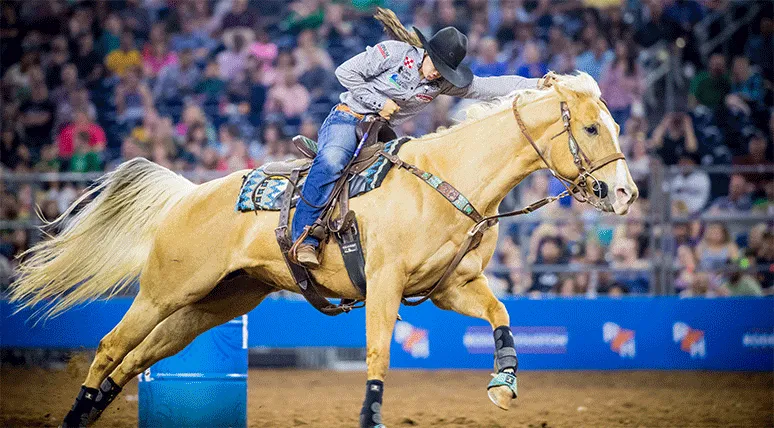With world-renowned horse races like the Kentucky Derby held earlier this month and the Belmont Stakes coming up next week, equestrian culture is generating all sorts of excitement and buzz as of late. It’s not surprising then to hear that there is a huge audience for this kind of programming from Ride TV, an emerging network that is making a name for itself in the equestrian world. The demand for horse content is strong and continues to grow. As a network, Ride TV has created a place where viewers can watch show jumping, barrel racing, dressage, bull riding, and much more.
“We want to become the home of equestrian sports broadcast,” said Amanda Morris, director of marketing and public relations at Ride TV. Today’s TV marketplace is more vibrant and competitive than ever before with an endless menu of options for viewers to choose from. The competition for viewers’ attention makes it even more noteworthy when a new, niche network launches and succeeds. Morris credits Ride TV’s ability to thrive to the great relationships it has fostered with its affiliates: “We try to go in and say, ‘What are you as an affiliate struggling with? What is an issue you are having that we can help you solve?'” The network, which launched five years ago, sponsors equestrian events for its partner operators all over the country. These kinds of partnerships allow both companies to co-brand themselves and introduce new audiences to the rich and niche programming that Ride TV offers—all while helping the operator gain and retain customers.
Ride TV also stands apart in that the network offers a 24/7 lineup focused on equestrian lifestyle sports and bull riding. “We know based on census data there are 30 million Americans who will watch this,” said Morris. That data takes into account people who are involved in some sort of equestrian sport either as an athlete or a spectator. The market was already there.
“It’s an industry that’s relevant to a huge part of the country,” said Morris. Ultimately, Ride TV targets rural and heartland Americans, but the network also wants to appeal to general audiences nationwide. “Horses are universal. Everyone recognizes the beauty and the power of this animal. We try to cater to anyone who gets that feeling when they see a horse running,” added Morris.
The network also features lifestyle content on its digital platforms, where it houses cooking shows, travel programs, and documentary series, including This Old Horse, which mimics the style of ESPN’s 30 for 30 sports series but instead of featuring an athlete, each episode highlights a particular horse in an event. Cowgirls, another popular show on the network, follows five female ranch bronco riders as they travel across the U.S. to compete in different rodeos. Since ranch bronco riding is a sport primarily dominated by men, Ride TV was interested in portraying successful women in the sport who haven’t let traditional gender limitations hold them back. “If you put the right content on air, you’ll draw eyeballs from people who have never seen it before,” said Morris.
The network also has an international market that it hopes to tap into more through its bull riding programming—a sport that is popular in South America. In fact, Ride TV recently gained the exclusive rights to the Professional Bull Rider’s (PBR) Velocity Tour for 2019. “We bring a lot of value to the industry. We’re not just entertaining people. We aim to look like an Olympics broadcast,” said Morris.
And while the network doesn’t have the exclusive rights to cover events like the Belmont Stakes next week, Ride TV will still bring coverage to its audience through its website, blogs, and social media channels to ensure customers are getting up-to-date news of the live competition. “It’s all about enhancing the lives of our viewers,” added Morris.
As for the future of Ride TV, Morris believes the network will see a lot of growth in the coming year. “We want to be able to break into more of the equestrian industry, bring more extreme equestrian sports to the table, and get out of the box a little,” said Morris. “We want to cater to a more general audience, but also continue to be home to the major equestrian events around the world. Someday in the next five years, we want to be the only place that people will come to watch major races, major show jumping events, major rodeos, major bull riding.”









